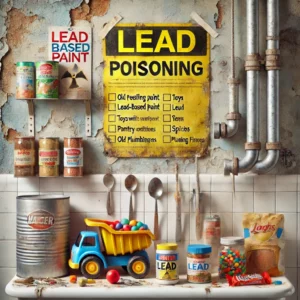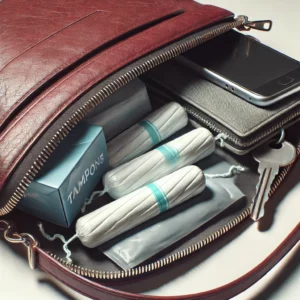Breaking: What Consumers Need to Know About Lead Contamination in Vintage Corelle
Corelle has issued an urgent safety warning regarding high lead levels in their vintage dinnerware, advising consumers to cease using pre-2005 dishes for food service. This announcement affects millions of households across America that may be using these popular dishware sets. The warning comes as independent testing confirms the presence of significant lead content in older patterns, particularly those featuring vibrant colors and intricate designs.
5 Key Points
- Corelle officially acknowledges that dinnerware manufactured before 2005 contains dangerous levels of lead.
- The company recommends relegating pre-2005 pieces to decorative use only.
- Lead exposure risks include severe neurological damage, especially in children under 6.
- Professional testing reveals lead can leach into food from decorative glazes.
- Health experts warn of cumulative exposure effects from daily use.
How Did a Family’s Tragedy Uncover This Hidden Danger?
The story begins with a family’s devastating encounter with lead poisoning that would eventually spark a nationwide investigation into household lead exposure. In 2005, Tamara Rubin’s world turned upside down when her two young sons, Avi and AJ, became violently ill. What started as concerning symptoms quickly escalated into a parent’s worst nightmare. The diagnosis revealed acute lead poisoning from exposure to lead-infused paint, leaving one child with permanent brain damage and the other struggling with severe dyslexia, complex gastrointestinal issues, and life-altering food allergies.
This devastating experience transformed Rubin from a concerned mother into a dedicated lead poisoning prevention advocate. In 2009 she furthered her mission by acquiring a professional X-ray fluorescence (XRF) lead-testing gun. Her systematic testing of household items revealed an alarming truth: lead lurked in countless everyday objects, from children’s toys to kitchen essentials. Among her most significant findings was the discovery of high lead levels in vintage Corelle dinnerware, a brand treasured in American households for generations.
What Health Risks Does Lead Exposure Pose?
Medical experts at the Mayo Clinic emphasize that lead poisoning poses particularly severe risks to children under 6 years old. According to the World Health Organization’s latest research, lead poisoning claims approximately one million lives globally and affects millions more with lifelong health complications. The insidious nature of lead exposure lies in its cumulative effect – even small, regular exposures can build up over time to cause significant health problems.
Lead exposure health risks include:
- Neurological damage and cognitive impairment, particularly in developing brains
- Severe developmental delays in children under 6
- Chronic kidney and liver damage
- Persistent gastrointestinal problems
- Irreversible neurological effects
- Behavioral and learning difficulties
- Potential reproductive health issues
How Can You Identify Dangerous Vintage Corelle Products?
All Corelle dinnerware manufactured before 2005 potentially contains high lead levels in their glazes and patterns. Industry experts and consumer safety advocates have identified specific risk factors to watch for:
How to identify affected products:
- Check for manufacturing dates before 2005
- Look for vintage patterns with vibrant colors
- Examine pieces featuring intricate designs
- Watch for items showing signs of wear or damage
- Pay special attention to collections from the 1970s through the early 2000s
What Steps Should Vintage Corelle Owners Take?
Safety experts and Corelle representatives have developed comprehensive guidelines for owners of pre-2005 dinnerware. These recommendations prioritize immediate action to protect household members while acknowledging the sentimental value many families place on their vintage collections.
Expert recommendations:
- Remove all pre-2005 pieces from kitchen cabinets immediately
- Discontinue use for food service and storage
- Consider pieces for decorative purposes only
- Replace daily-use items with post-2005 lead-free alternatives
- Store vintage pieces separately from current dinnerware
Why Does Lead in Vintage Glazes Pose Such a Serious Risk?
The science behind lead contamination in dinnerware reveals a complex interaction between glazes and daily use. Dr. Maria Thompson, a materials scientist specializing in ceramic safety, explains that lead was historically prized in ceramic glazes for its ability to create vibrant colors and durable finishes. However, this aesthetic benefit came with hidden dangers that became more pronounced over time.
The risk of lead leaching increases significantly under certain conditions. When dishes are exposed to hot foods or beverages, the heat can accelerate lead release from the glaze. Acidic foods, such as tomato-based sauces or citrus fruits, can also break down the protective barriers in the glaze, allowing lead to migrate into food. Even normal wear and tear from daily use, dishwashing, and microwave heating can degrade the protective surfaces, increasing exposure risks.
How Are Families Coping with This Discovery?
The impact of this revelation extends beyond immediate safety concerns. For many families, Corelle dinnerware represents cherished memories and family traditions. Sarah Martinez, a third-generation Corelle collector from Cincinnati, shares her experience: “These dishes were passed down from my grandmother. We’ve used them for every holiday meal since I was a child. Learning about the lead risk was heartbreaking, but my children’s safety has to come first.”
Support groups and online communities have emerged to help families navigate this challenging transition. They share strategies for safely preserving vintage pieces as decorative items while building new traditions with lead-free alternatives.
Safety Actions to Take Immediately
- Inspect your Corelle collection for manufacturing dates
- Separate pre-2005 pieces from current kitchen items
- Purchase lead-free replacement dishes for daily use
- Consider professional lead testing if concerned about exposure
- Consult healthcare providers about potential testing needs
This consumer safety alert underscores the importance of staying informed about household products that may pose health risks. While vintage Corelle pieces hold sentimental value for many families, the potential health impacts of lead exposure necessitate immediate action to protect household members, particularly vulnerable populations like children and pregnant women.
FAQ
Q: How can I tell if my Corelle dishes contain lead?
A: While exact dating methods vary, any Corelle products manufactured before 2005 should be considered at risk for high lead content. Check manufacturing dates on the original packaging or contact Corelle with product details.
Q. What should I do with my pre-2005 Corelle dishes?
A. Corelle officially recommends removing these items from food service use immediately. If you wish to preserve family heirlooms, they can be safely displayed as decorative pieces.
Q. Are modern Corelle products safe?
A: Corelle products manufactured after 2005 follow strict safety guidelines and do not contain lead in their glazes or patterns.
Q. How does lead exposure occur from dinnerware?
A: Lead can leach from glazes into food, especially when dishes are exposed to heat or acidic contents. The risk increases with wear and tear on the protective surfaces.
Q: What are the signs of lead poisoning?
A: Common symptoms include developmental delays, learning difficulties, irritability, loss of appetite, fatigue, abdominal pain, and in severe cases, seizures.
Q: Should I have my family tested for lead exposure?
A: If you regularly use pre-2005 Corelle products, consult your healthcare provider about lead testing, especially for children and pregnant women.
Citation
Ediriweera, Himani (2025, January 28). “Corelle Issues Serious Warning Over Levels of Lead in Dinnerware.” MSN Health. Retrieved from https://www.msn.com/en-us/health/medical/corelle-issues-serious-warning-over-levels-of-lead-in-dinnerware/ar-AA1xZdmM







